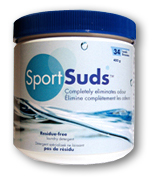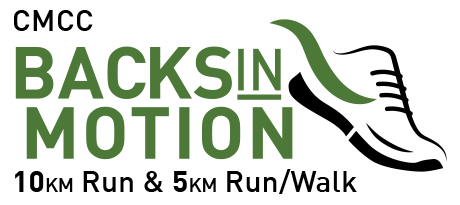“How to reduce the stink and get the best performance out of your Microfiber workout gear.”
We all have a friend who we love very much, but… well we just don’t have the heart to tell how much they really need this article. I admit I can be that friend sometimes, but not anymore because I now have the scoop on how to reduce the stink and maximize the performance of my running apparel. It’s all about what we choose to wash with and how we choose to dry. When the correct cleaning method is used, you can expect reduced odor and more importantly, better performance. It all starts with understanding how Microfiber works. Unlike cotton or most other natural fibers, Microfiber fibers are non porous. Being nonporous, these fibers naturally repel moisture. When moisture is spread over the surface of a greater area it will evaporate quicker, allowing for maximum comfort. These “Micro” fibers are woven together with other man made fibers such as nylon or polyester, to achieve different functions.
If you take a look at the washing instructions on your performance wear you will notice a couple common do’s and don’ts. #1. Never use bleach on your Microfiber clothing. The bleach can actually break down the fibers and reduce the life of the garment, not to mention fading the color of the piece. #2. Never dry clean. This process uses solvents that can be harmful to Microfiber clothing in the same way mentioned in #1. #3. Warm or cold water is often the choice of the manufacturers. Hot water will likely fade your garments and/ or shrink or melt them.
The following instructions are general and are a mix of recommendations from a variety of sources.
Washing
READ THE LABELS – I know that sounds way too easy, but for the most part all the information required is there. For those of you who don’t know what the heck all those little symbols stand for (like me), these tips will help.
1. For best possible results try using a product like Nikwax Tech Wash or SportSuds . Both products has been specifically formulated for synthetic performance clothing. The basic idea is it’s tough on dirt but doesn’t have the long term detrimental effects on your expensive apparel that detergents can have over the years. By not using harsh detergents to clean the fabric, the “water repellent” properties of your favourite jacket, shirt, or tights work better for longer. This is especially true for outerwear like Jackets and pants because they’re exposed to rain, snow, and sleet directly. When you buy a new outerwear piece notice how nicely water “beads up” on the surface of the fabric when it’s new. Now try the same test with an older jacket and watch how quickly the water absorbs through the fabric. The goal is to try and maintain that “like new” finish as long as possible which will keep your dryer and happier, and make your clothing last longer!
2. If your still not convinced about non-detergent soap, it is OK to use some powdered detergents but NOT OK to use liquid detergents. Most liquid detergents use animal fat in their formula. If the container indicates the product is biodegradable, it likely contains animal fat. The actual fibers used in the garment will become coated with residue in effect reducing the benefits of the piece. Ketones in the fat residue are also the culprit of most of the stinky odor. When your body heats up while working out, the animal fat odor becomes activated and hence, – stinky, stinky. Some powdered detergents do not use the same formula, so they will not leave any clogging residue. Using a little less detergent wont hurt and is likely to get the job done.
 3. Using reasonably hot water will not harm most Microfiber clothing. Warmer water is more efficient in removing stains and grime. Cold water will work too but lacks the scrubbing punch. Hot water can however fade colored garments. Stick to cold water when you can and use warm (not hot) water only when needed.
3. Using reasonably hot water will not harm most Microfiber clothing. Warmer water is more efficient in removing stains and grime. Cold water will work too but lacks the scrubbing punch. Hot water can however fade colored garments. Stick to cold water when you can and use warm (not hot) water only when needed.
3. Use the gentle cycle setting on your washing machine. This will help your performance wear last a little longer.
1. The ultimate drying technique is just to lie out or hang Microfiber. They will dry very
quickly, and be reasonably static free. You’ll save a little energy and realize the ultimate
potential of your Microfiber clothing. If you use a dryer, DO NOT use fabric softener sheets. They too contain fiber clogging surfactants in their formula. A gain, this will coat the fibers in the garment and reduce the benefits. If you choose to use a dryer, use the warm, NOT HOT setting. Extreme heat may actually melt some of your nylon or polyester/ Microfiber pieces.
gain, this will coat the fibers in the garment and reduce the benefits. If you choose to use a dryer, use the warm, NOT HOT setting. Extreme heat may actually melt some of your nylon or polyester/ Microfiber pieces.
Good luck!





















Wow I did not come across this article until now but it is extremely helpful. Thanks Nick.
I had no idea that biodegradable detergents contained animals fats and I also didn’t know that it wasn’t good to use liquid detergents.
I thought that it would be better to use liquid detergents since I only use cold water for my laundry and I assumed liquid detergents would mix more nicely with cold water (I find powdered detergents tend to clump).
Since I’m washing my clothes like crazy from all the excessive sweating and dry-land training; are there also any other economical suds out there that you can recommend?